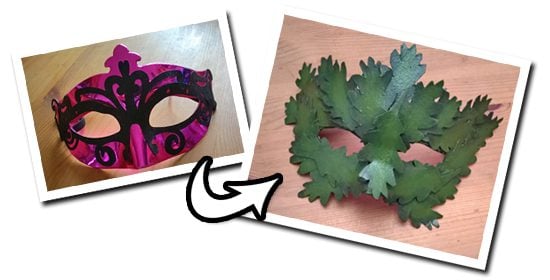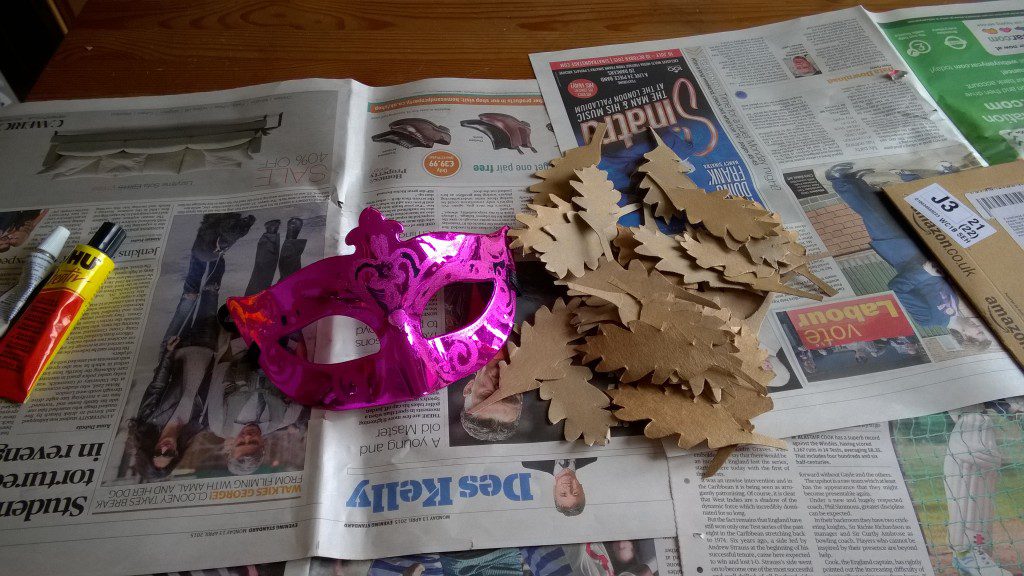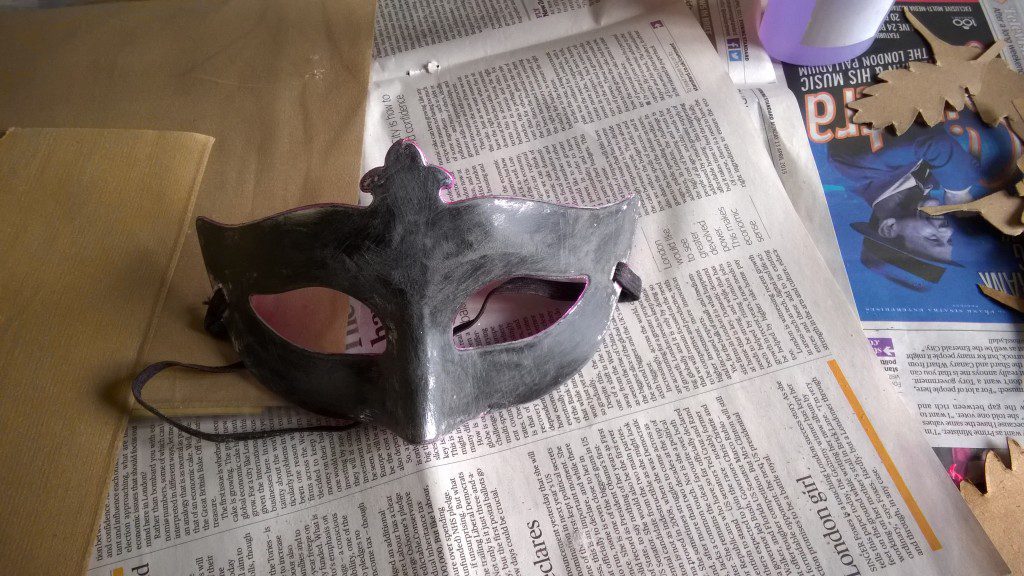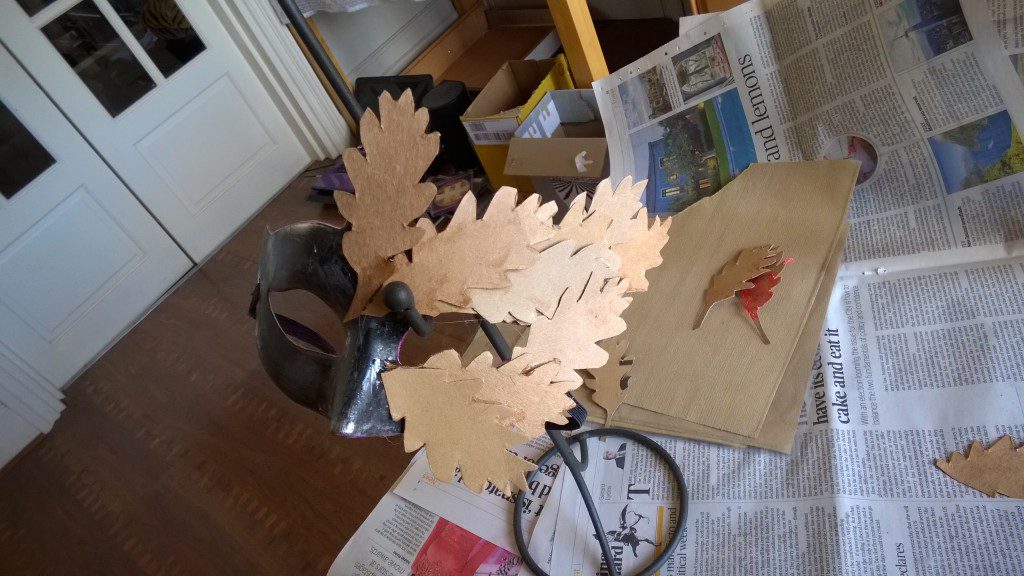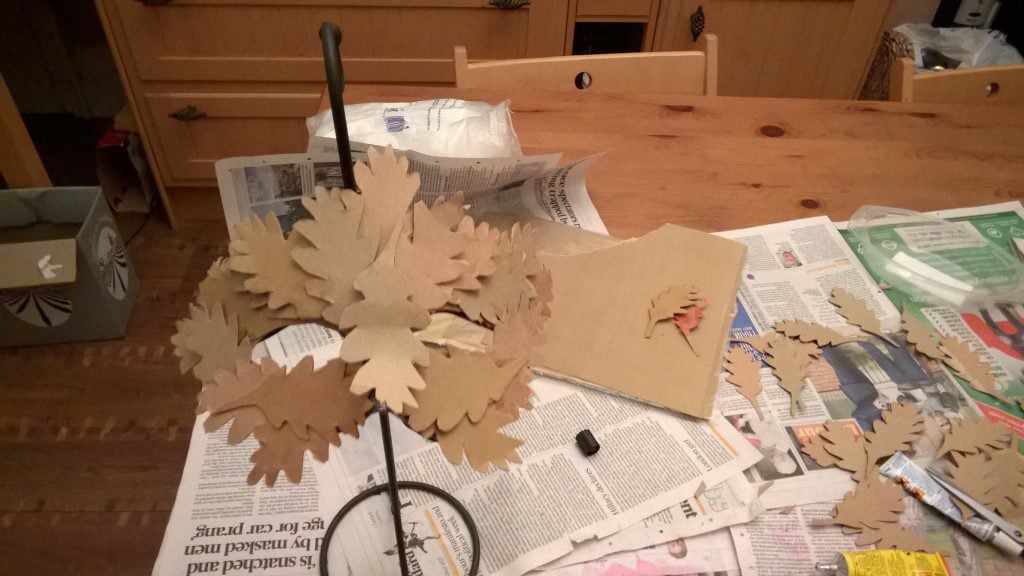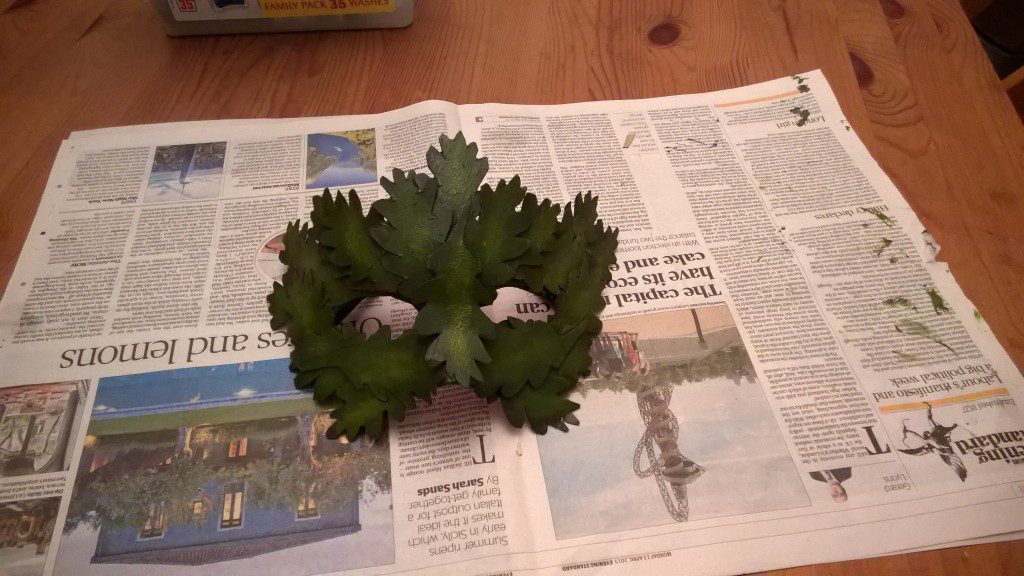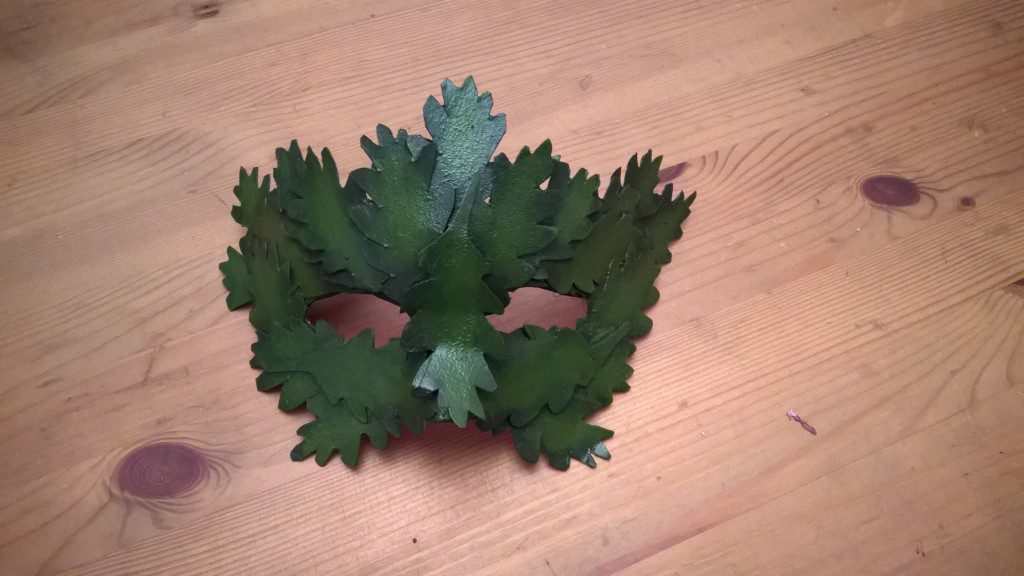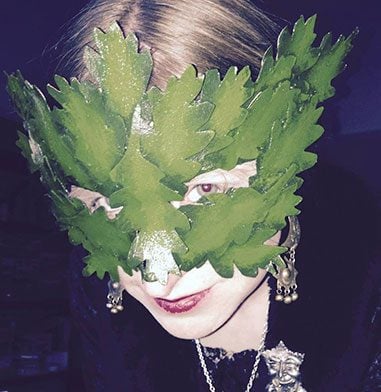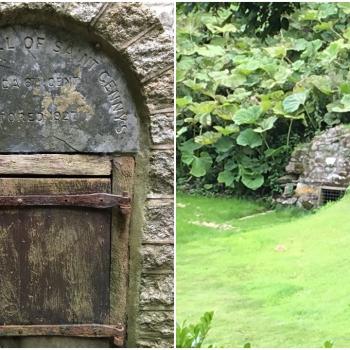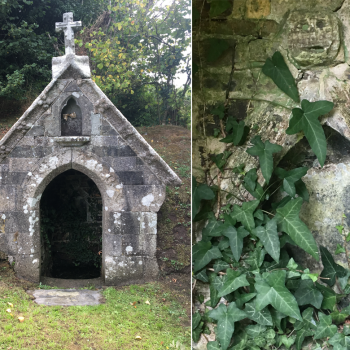You might have seen the Green Man mask I’m wearing on my About page and profile picture. I made that myself last year, out of mostly recycled and upcycled materials. I made it in April in time for Earth Day on the 22nd and St. George’s Day on the 23rd (the Green Man often connected with St George), in addition to wearing it for the Beltane ritual of my local moot and the Sweeps Festival in my hometown of Rochester, a festival associated very much with Beltane and the Green Man in particular.
I thought I’d share how to make it for anyone else who wants to try some simple eco-friendly arts and crafts for Earth Day while also celebrating the Green Man on St George’s Day and Beltane!
While that this is a great activity to do with children, you’ll need to make some adaptations – see the bottom of the instructions for notes on this.
You’ll need….
- An old party mask; this can be made from any material that can withstand paint stripping and gluing, so soft materials like latex are not recommended. The mask I used was made of hard plastic.
- Nail varnish remover (or similar for removing paint)
- Cotton wool
- Sandpaper
- Card (preferably recycled)
- Scissors
- Strong glue
- Paint (Acrylic works well)
- Paintbrush
- Sponge
- Varnish
Step 1 – Cut out leaf shapes from card (I used Amazon.co.uk delivery envelopes; they’re just the right level of thickness and I have plenty around from all the books I order!)
Step 2 – Strip any factory paint from your mask with nail polish remover, applying with cotton wool (you may want to wear gloves to do this). Use sandpaper to get off any excess paint; sanding also helps to make a rough surface which is easier to glue on.
Step 3 – Start sticking your leaves on with strong glue. I recommend starting from the outside edges of the mask and working your way inwards. Make sure the leaves cover all the surfaces of the front of the mask and overlap them as much as possible; this not only looks better but also helps them stick together more. You might find it easier to let one half of the mask dry before gluing the leaves on the other half.
Step 4 – Let all glue dry fully.
Step 5 – Paint your base layer all over the leaves with a paintbrush. This should be the darkest colour. I used dark green-brown acrylic. Apply thickly, making sure you get in all the little cracks and crevices; apply several layers if necessary.
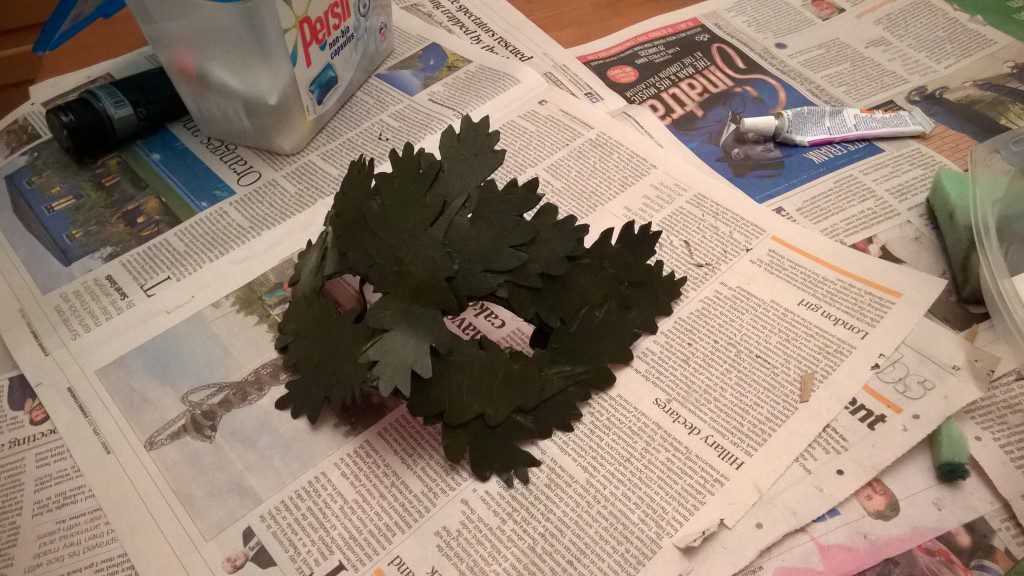
(If you’re wondering about the Persil box in the background, that’s what I keep all my paints in!)
Step 6 – Let the base layer dry fully, and then add your midtone layer. This should be a lighter shade of the colour used for the base layer and applied lightly in the middle of each leaf; I used a sponge to do this. You can then let this dry and add your highlights, which will be a lighter shade again, and so on until you’re happy.
Step 7 – Let all paint dry fully and varnish (do this in a well ventilated area and wear gloves if necessary). The varnish not only gives your mask a nice finish, but also helps to seal all the leaves together and gives it a little bit of defence against the elements.
Step 8 – Let the varnish dry fully, and wear!
Of course, you don’t have to make this mask with oak leaf designs – why not try holly for Yule, or brown autumn leaves for Mabon, or any other kind of leaf or flower you like? You could even use real leaves!
For parents, guardians and teachers
If you would like to try this with children, it’s easy to modify. Working with acrylics, paint remover, varnish and strong glue is not recommended for young children, so instead adapt your project using a card, paper or papier mâché mask – they could even make their own mask base! You can then use child-friendly poster paints and PVA glue. Or, if you choose to make this an autumn activity, you could get the children to collect fallen leaves and make the mask with those! It can be a great way to teach children how to make beautiful things with recycled goods, and also ties in well with Earth Day, St George’s Day and May Day. Why not use the opportunity to introduce the character of the Green Man and explore nature spirits in different cultures? For primary school teachers, it could form a good chunk of a Scheme of Work with links into art, science, history, RE and geography!

